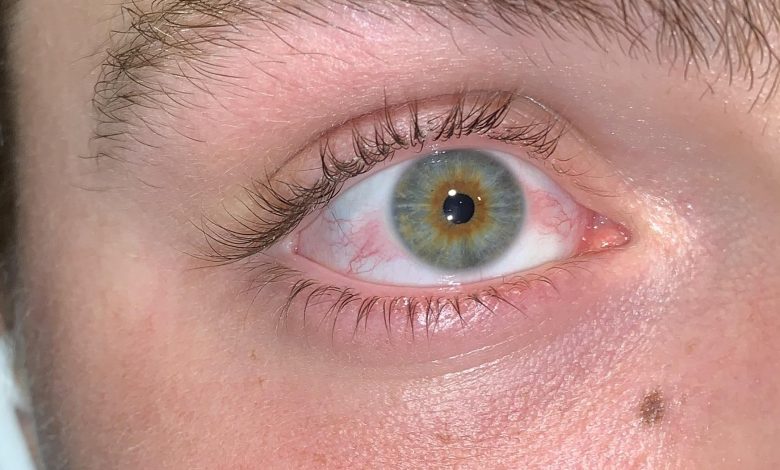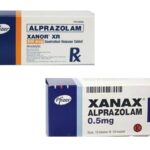What Does Xanax Do To Your Eyes?

Medication use can cause changes in the eye’s general color or motion. Bloodshot eyes are a common symptom of intoxication from several drugs, these occur because blood vessels in the eyes expand. Consistent substance misuse leads to constriction or dilation of the eyes.
Studies have shown that the eyelids are most frequently involved in drug toxicity that commonly manifests as inflammation, hypersensitivity reaction, or dermatitis.
Substance use can have numerous effects on the eyes that cannot be easily concealed. From the size of their pupils to redness, their eyes can reveal what substances they may be using. Because drugs and alcohol affect neurotransmitters in the brain, some effects can cause physical signs to manifest, including changes in the eyes.
Recognizing damage or dysfunction to either ocular structures or the components of the visual pathway can sometimes prevent a person from going blind.
What is Xanax?
Xanax is a brand of alprazolam, a powerful benzodiazepine that is used to treat anxiety and panic disorders by decreasing abnormal excitement in the brain. The medication comes in the form of a tablet that quickly dissolves in the mouth, an extended-release tablet, or a concentrated oral solution.
Benzodiazepines can have therapeutic anti-anxiety, anti-convulsant, muscle relaxing, and sedative effects. Xanax works by increasing the effects of a brain chemical called gamma-aminobutyric acid (GABA), which promotes calmness and produces a relaxed feeling. The drug decreases the level of excitement in the brain to treat anxiety and panic disorders.
Alprazolam is among the most prescribed benzodiazepine drugs in the U.S. and is among the benzodiazepines most often found in the illegal market, according to the Drug Enforcement Administration.
Xanax is often prescribed for mental health disorders related to anxiety. It can be used to treat general anxiety, panic disorder, social anxiety disorder, and phobias. It can also be used to treat seizures. For people who suffer from anxiety, it can create a sense of relief to focus on their lives without issues of anxiety or phobias plaguing them. When used as prescribed, it can calm people down and make them feel relaxed.
Xanax can also reduce physiological symptoms of anxiety and fear, such as a racing heart or hyperventilation. These drugs are so often prescribed because they work well on anxiety and they’re cheap.
However, many people use Xanax for nonmedical reasons, taking it in larger doses or more frequently than prescribed because it can create a euphoric feeling, especially at higher doses. Xanax tends to start acting quickly after a person takes it, and the euphoric effects of the drug will usually manifest themselves within about an hour after taking it.
A tendency has grown in some social circles to view Xanax, as a type of “alcohol” in pill form. It’s become socially acceptable among these groups of friends to get together and share Xanax with one another. Of the 30.5 million people who used benzos in 2015, 17.1% misused them. Misusing Xanax or combining it with other substances like alcohol can amplify its effects, but the results can also be deadly.
Along with recreational use, many people rely on Xanax to deal with issues like situational anxiety without having to commit to therapy, which can be expensive and time-consuming. Xanax is popular in America, for example, because there is a tendency for people to love things that are looked at as a quick fix. Xanax isn’t a long-term medication, so some people “take it when they need it” for relief. The temporary relief they feel can help in a fast-paced world with constant exposure to negative world news, stressful jobs, and uncertainty.
What does Xanax do to your eyes?
Studies have shown that taking Xanax can negatively affect the eyes in several ways, especially among individuals abusing or using the medication for a long period of time. The effects of Xanax on the eyes can include:
- Bigger, dilated, or enlarged pupils (black part of the eye)
- Blurred vision
- Change in color vision
- Difficulty in reading
- Difficulty seeing at night
- Double vision
- Eye irritation
- Increased sensitivity of the eyes to sunlight
In addition, Xanax can also cause yellowing of the eyes in some people following an overdose. Get medical help right away if these rare but very serious side effects occur.
Xanax may cause other eye-related side effects. Call your doctor if you have any unusual problems while taking this medication.
If you experience a serious side effect, you or your doctor may send a report to the Food and Drug Administration’s (FDA) MedWatch Adverse Event Reporting program online (http://www.fda.gov/Safety/MedWatch) or by phone (1-800-332-1088).





